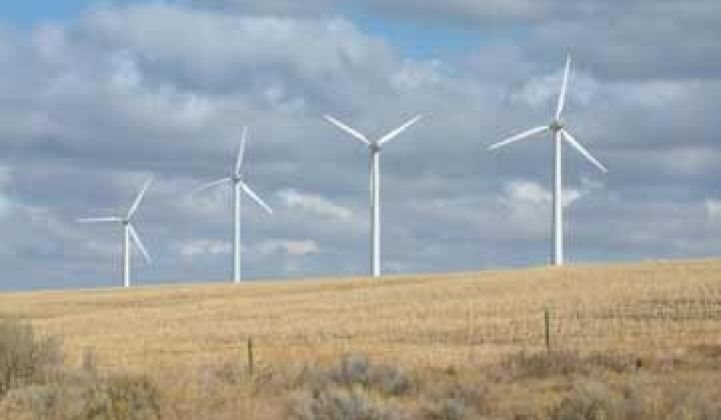Despite a still-struggling economy, the wind energy industry saw a lot of growth and movement in 2009.
The American Wind Energy Association released its annual report today, which shows an addition of more than 10,000 MW of new wind power across the U.S., bringing the total to more than 35,000 MW overall. Wind continues to be the leader in new electricity generation, accounting for 39 percent of new power sources added to the grid, second only to natural gas.
“Our annual report documents an industry hard at work and on the verge of explosive growth if the right policies -- including a national Renewable Electricity Standard -- are put in place,” Denise Bode, CEO of AWEA, said in a statement.
The trade group’s report added offshore wind as a category, with 12 proposed projects off of the East Coast and in Lake Eerie and the Gulf of Mexico.
There wasn’t a lot of shake-up in 2009 -- GE continues to lead the pack in wind turbine sales in the U.S., and NextEra also stayed on top in wind farm ownership, while Xcel Energy led the utilities with 3,049 MW of wind power under contract.
Although the leaders stayed the same, the report also showed some diversification within the industry. There were eight companies that own more than 1,000 MW of wind assets, up from five in 2008. Last year also saw a 15 percent growth in the small turbine market.
While Texas still leads in wind farms, it was Iowa that jumped ahead of other states to become the first state to get more than 10 percent of its electricity from wind. North Dakota and Minnesota were also close to the 10 percent mark, but Iowa outstripped both of its neighbors with 14.2 percent of electricity from wind generation.
The news isn’t all rosy, however. As the economy continued to lag, so did turbine manufacturing. Thirty-nine new turbine factories came on line in 2009, down from 58 the year before.
Looking forward, the AWEA used the report to put out a call for both a national Renewable Electric Standard and infrastructure updates to connect nearly 300,000 MW of proposed wind projects that are waiting for interconnection to the electric grid.
“The large number of wind projects in the interconnection queues provides an indication that the nation’s electric grid is currently inadequate for accommodating the demand for wind energy,” the report states.
The U.S. Department of Energy estimates that reaching 20 percent wind power will cost $60 billion in new wind-power transmission by 2030. While transmission lines to get fickle wind power from sparsely-populated plains to urban areas sound good in theory, the price tag and NIMBY attitude of many Americans may continue to hinder wind development though 2010 and beyond.
Wind

Wind Industry Reports Record Growth in 2009
U.S. wind energy industry reports 10,000 new MW of power last year

Wind Industry Reports Record Growth in 2009
-
41Where Will DOE’s Loan Program Make the Next Climate Tech Investments?
-
15What the Frack Is Happening With Natural Gas Prices?
-
9With an Energy Crisis Brewing, No Peak in Sight for Emissions


